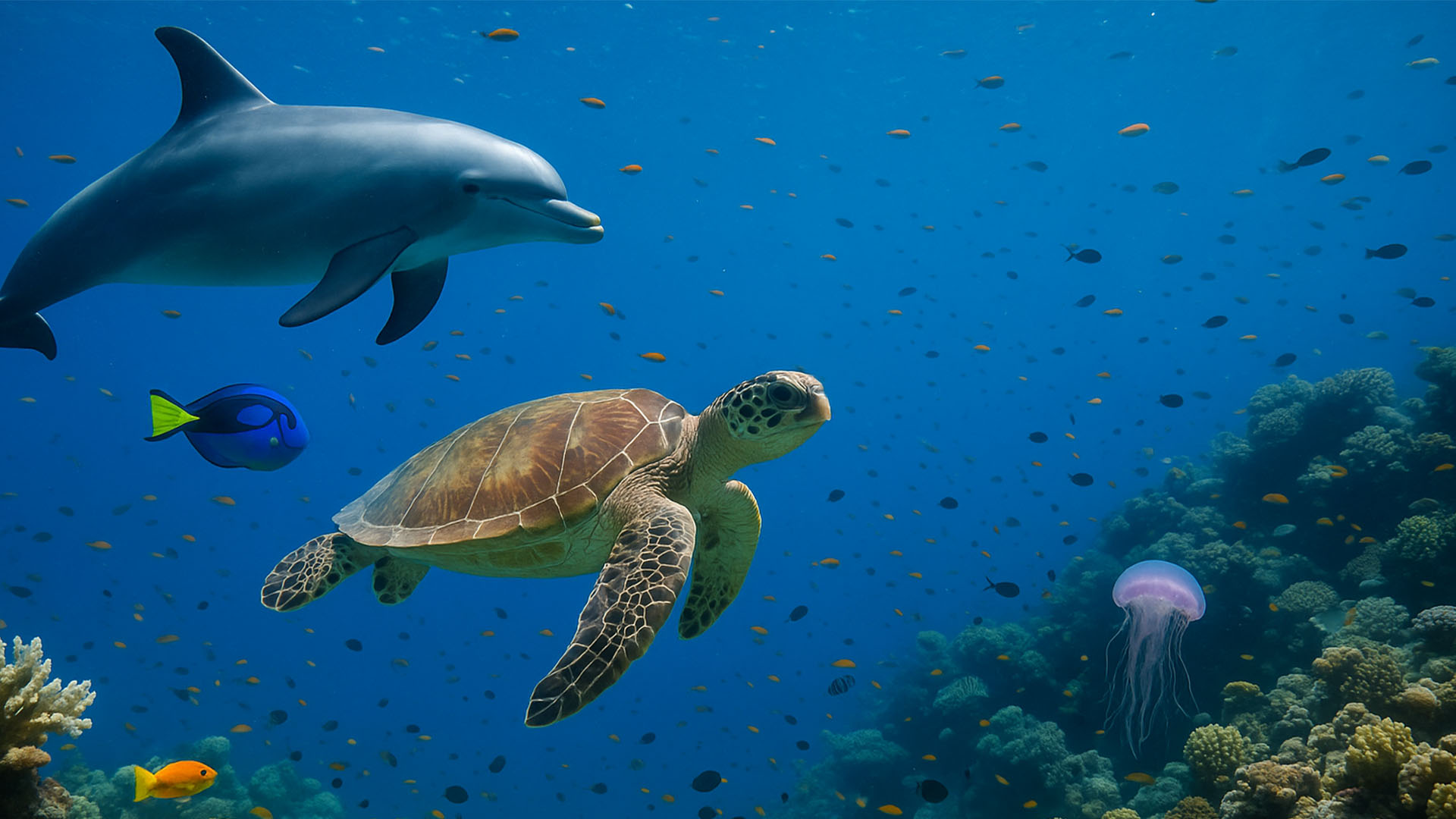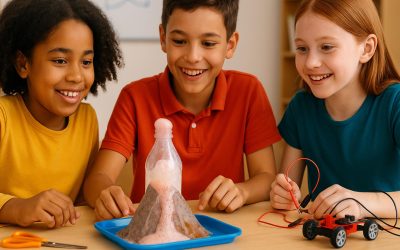The ocean is a vast and mysterious world, covering more than 70% of our planet. It’s home to an incredible variety of plants and animals, from tiny plankton to the largest creature on Earth, the blue whale. Exploring the ocean helps us understand the importance of marine life and how we can protect this amazing underwater realm. Let’s dive in and discover the wonders hidden beneath the waves!
What Lives in the Ocean?
The ocean is teeming with life! You can find all sorts of creatures, including fish, sharks, dolphins, whales, sea turtles, octopuses, and countless types of invertebrates like jellyfish and crabs. Each part of the ocean, from the sunny surface to the dark, deep trenches, has different animals adapted to live there. For example, coral reefs are like underwater cities, providing homes and food for thousands of species of fish and other marine animals. [1]
How Deep is the Ocean?
The ocean is incredibly deep in some places. The average depth of the ocean is about 12,100 feet (3,688 meters). The deepest part of the ocean is the Mariana Trench, located in the Pacific Ocean, which is about 36,070 feet (10,994 meters) deep. That’s deeper than Mount Everest is tall! The deeper you go, the darker and colder it gets, and the pressure increases. Animals living in these deep-sea environments have special adaptations to survive the extreme conditions. [2]
Why is the Ocean Important?
The ocean plays a vital role in our lives and the health of our planet. It produces more than half of the oxygen we breathe and absorbs a large amount of carbon dioxide from the atmosphere, helping to regulate Earth’s climate. The ocean also provides food for billions of people, supports jobs in fishing and tourism, and is a major pathway for global trade. Protecting the ocean means protecting our future. [3]
How Can We Protect Our Oceans?
Our oceans face many threats, including pollution, overfishing, and climate change. But there are many things we can do to help:
- Reduce Plastic Use: A lot of plastic ends up in the ocean, harming marine animals. Use reusable bags, bottles, and containers.
- Conserve Water: The less water we use at home, the less runoff and wastewater will eventually reach the ocean.
- Support Sustainable Seafood: Choose seafood that is caught or farmed in ways that don’t harm ocean ecosystems.
- Participate in Beach Cleanups: Join local efforts to remove trash from beaches and coastlines.
- Learn and Share: Educate yourself and others about the importance of the ocean and marine conservation.
Q&A About the Ocean
Q1: What is the largest animal in the ocean?
A1: The blue whale is the largest animal in the ocean, and also the largest animal on Earth.
Q2: What are coral reefs?
A2: Coral reefs are underwater ecosystems built by tiny animals called polyps. They are incredibly diverse and important habitats for marine life.
Q3: Why is the ocean salty?
A3: The ocean is salty because rivers carry dissolved salts and minerals from land into the ocean. Over millions of years, these salts have accumulated.
Q4: What is ocean pollution?
A4: Ocean pollution is when harmful substances like plastic, chemicals, and oil enter the ocean, damaging marine life and ecosystems.
Sources
[1] National Ocean Service (NOAA): https://oceanservice.noaa.gov/facts/coral.html
[2] Woods Hole Oceanographic Institution: https://www.whoi.edu/know-your-ocean/ocean-topics/ocean-characteristics/ocean-depth/
[3] The Ocean Foundation: https://oceanfdn.org/why-is-the-ocean-important/








0 Comments